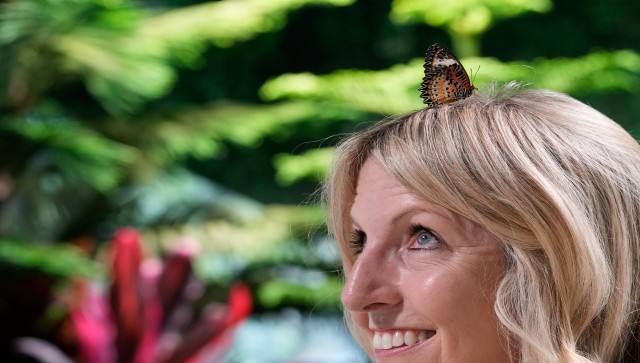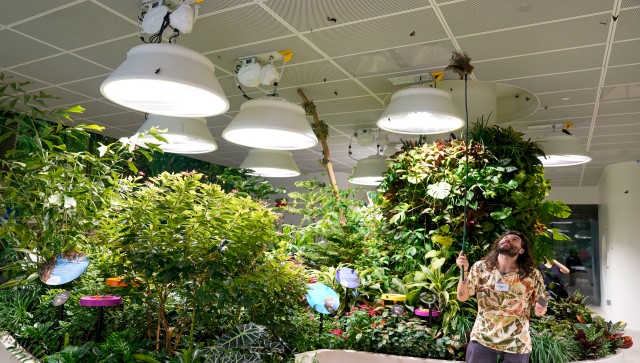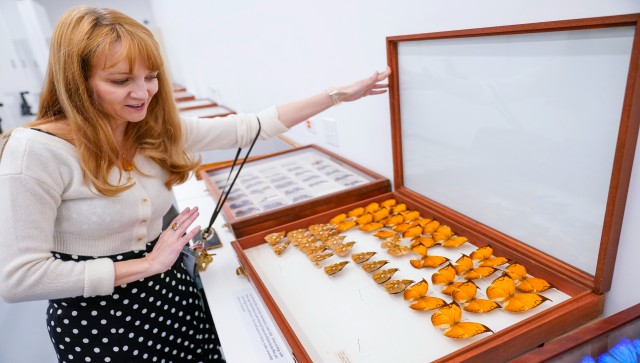What’s the buzz? Insects are flying out of the new American Museum of Natural History centre
The American Museum of Natural History in New York is set to open its new building on Thursday. From tiny ants to giant whales, from moths to butterflies, The Gilder Center is already home to more than a half million tiny inhabitants
)
The American Museum of Natural History in New York is set to open its new building, a sweeping piece of architecture designed to connect visitors with their place in the natural world. AP
)
The $465 million centre is already home to more than a half million tiny inhabitants, residents of an insect exhibition with 18 species of live critters, and an indoor garden where visitors can mingle with hundreds of moths and butterflies. AP
)
The museum shipped in around 500,000 leafcutter ants to build a massive colony in the insectarium. The tiny workers collect their leaves from one glass enclosure, then march across a sky bridge to cultivate their fungal feasts in big glass bulbs along the wall. AP
)
The ants needed some help adjusting to the space: scientists had to hold “training sessions” to show them where to go, said Cheryl Hayashi, the museum’s provost of science. They’ve since settled into their new home. AP
)
Giant whales swoop along the walls in an immersive video display. And the building’s natural curves — inspired by canyons in the Southwest — are meant to highlight how all of it is intertwined. AP
)
Brightly coloured butterflies flap around a garden — which is kept hot and humid to mimic their tropical homes — while giant beetles munch on decaying fruit. AP
)
“Collections Core” shows off a wide range of items, from megalodon teeth to Mayan bricks to spools of spider silk, and gives visitors a peek at the stuff the science is based on. Museum entomologist David Grimaldi said “Insects get a very bad rap because of this tiny, tiny fraction of biting or disease-transmitting insects,” adding that most insect species pose no danger to humans and are an essential part of their bigger ecosystems. AP
)
More than 4 million specimens from the museum’s collections are now being housed in the Gilder Center, some on display through big glass windows. The goal is to get people “up close and personal” with the bugs and highlight their importance to the natural world, said museum entomologist David Grimaldi. AP


)
)
)
)
)
)
)
)



